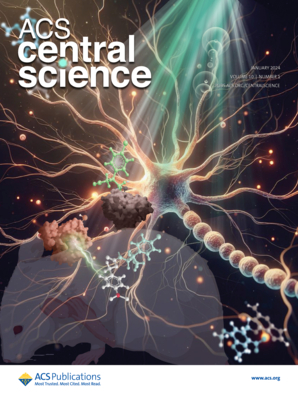BCAS1 阳性的少突胶质细胞能使多发性硬化症患者的皮质髓鞘有效再形成。
IF 12.7
1区 化学
Q1 CHEMISTRY, MULTIDISCIPLINARY
引用次数: 0
摘要
脱髓鞘是脱髓鞘疾病的一个重要再生过程,可限制中枢神经系统(CNS)的持续损伤。它能恢复盐性神经传导,确保轴突的营养支持。在多发性硬化症(MS)患者中,白质和灰质中都观察到了髓鞘再形成,而且发现皮质中的髓鞘再形成效率更高。脑富集髓鞘相关蛋白 1(BCAS1)可识别处于发育和再生过程中髓鞘形成活跃阶段的少突胶质细胞系细胞。除白质外,BCAS1+少突胶质细胞在皮质中终生保持高密度。在这里,我们研究了多发性硬化症患者活检和尸检组织中的皮质病变,并与脱髓鞘小鼠模型进行了直接比较,结果表明,在脱髓鞘损伤后,再髓鞘化皮质病变中的BCAS1+少突胶质细胞从静止状态转变为活化的节间形成形态,同时表达轴突接触形成所必需的髓鞘相关糖蛋白(MAG)。值得注意的是,活化的 BCAS1+ 少突胶质细胞是在实验性脱髓鞘的早期炎症中发现的。在人体组织中,活化的 BCAS1+ 少突胶质细胞与髓系细胞的密度相关,这进一步证明了它们参与了即时再生反应。此外,在研究慢性多发性硬化症患者显微镜下正常的非脱髓鞘皮质时,我们发现静止的 BCAS1+ 少突胶质细胞向成熟的、维持髓鞘的少突胶质细胞转变,这表明少突胶质细胞分化以及 BCAS1+ 少突胶质细胞在长期疾病中的有限补充。我们还证明,部分神经元周围卫星少突胶质细胞是BCAS1+,有助于人类和实验性皮质脱髓鞘的再髓鞘化。总之,我们的研究结果从人体组织和实验模型中提供了证据,证明成人大脑皮层中的 BCAS1+ 细胞代表了一种预分化的少突胶质细胞群,它们在脱髓鞘损伤后迅速做出反应,从而使髓鞘立即再生。此外,我们的数据还表明,BCAS1+少突胶质细胞的有限补充可能是导致慢性多发性硬化症皮质再髓鞘化失败的原因之一。本文章由计算机程序翻译,如有差异,请以英文原文为准。
BCAS1-positive oligodendrocytes enable efficient cortical remyelination in multiple sclerosis.
Remyelination is a crucial regenerative process in demyelinating diseases, limiting persisting damage to the central nervous system (CNS). It restores saltatory nerve conduction and ensures trophic support of axons. In multiple sclerosis (MS) patients, remyelination has been observed in both white and grey matter and found to be more efficient in the cortex. Brain-enriched myelin-associated protein 1 (BCAS1) identifies oligodendrocyte lineage cells in the stage of active myelin formation in development and regeneration. Other than in the white matter, BCAS1+ oligodendrocytes are maintained at high densities in the cortex throughout life. Here, we investigated cortical lesions in human biopsy and autopsy tissue from patients with MS in direct comparison to demyelinating mouse models and demonstrate that following a demyelinating insult BCAS1+ oligodendrocytes in remyelinating cortical lesions shift from a quiescent to an activated, internode-forming morphology co-expressing myelin-associated glycoprotein (MAG), necessary for axonal contact formation. Noteworthy, activated BCAS1+ oligodendrocytes are found at early time points of experimental demyelination amidst ongoing inflammation. In human tissue, activated BCAS 1+ oligodendrocytes correlate with the density of myeloid cells, further supporting their involvement in an immediate regenerative response. Furthermore, studying the microscopically normal appearing non demyelinated cortex in patients with chronic MS, we find a shift from quiescent BCAS1+ oligodendrocytes to mature, myelin-maintaining oligodendrocytes, suggesting oligodendrocyte differentiation and limited replenishment of BCAS1+ oligodendrocytes in long-standing disease. We also demonstrate that part of perineuronal satellite oligodendrocytes are BCAS1+ and contribute to remyelination in human and experimental cortical demyelination. In summary, our results provide evidence from human tissue and experimental models that BCAS1+ cells in the adult cortex represent a population of pre-differentiated oligodendrocytes that rapidly react after a demyelinating insult thus enabling immediate myelin regeneration. In addition, our data suggest that limited replenishment of BCAS1+ oligodendrocytes may contribute to the remyelination failure observed in the cortex in chronic MS.
求助全文
通过发布文献求助,成功后即可免费获取论文全文。
去求助
来源期刊

ACS Central Science
Chemical Engineering-General Chemical Engineering
CiteScore
25.50
自引率
0.50%
发文量
194
审稿时长
10 weeks
期刊介绍:
ACS Central Science publishes significant primary reports on research in chemistry and allied fields where chemical approaches are pivotal. As the first fully open-access journal by the American Chemical Society, it covers compelling and important contributions to the broad chemistry and scientific community. "Central science," a term popularized nearly 40 years ago, emphasizes chemistry's central role in connecting physical and life sciences, and fundamental sciences with applied disciplines like medicine and engineering. The journal focuses on exceptional quality articles, addressing advances in fundamental chemistry and interdisciplinary research.
 求助内容:
求助内容: 应助结果提醒方式:
应助结果提醒方式:


